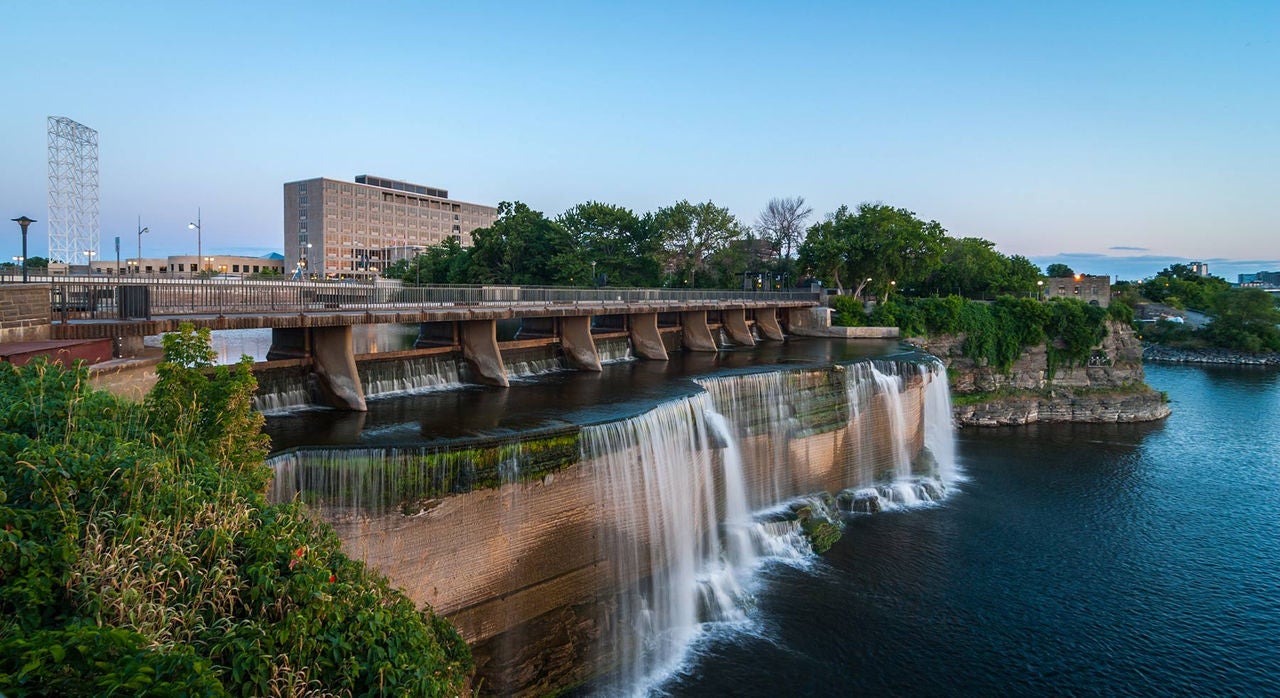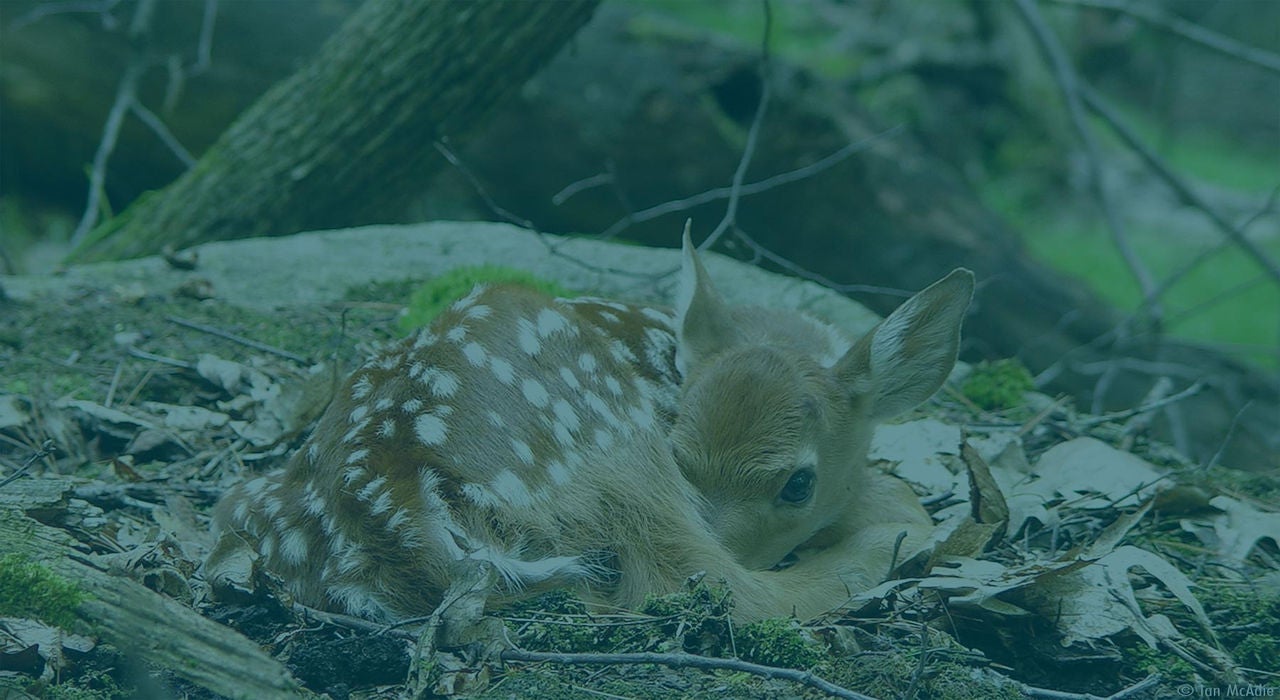Video
Species Facts
American Eel
Anguilla rostrata
The American Eel is a long, narrow-bodied fish that is born in saltwater and then migrates to freshwater to feed and grow before return to the ocean to spawn.
Habitat: American Eel are bottom-dwellers. During their feeding stage, they can be found in streams, rivers and lakes, as well as coastal bays and estuaries.
Range: American Eel begin life in the Sargasso Sea, in the Atlantic Ocean near Bermuda. From there, they migrate thousands of kilometres to live in freshwater habitats from Venezuela all the way to southern Greenland, including the Ottawa River, Lake Ontario and most other streams, rivers and estuaries in eastern Canada.
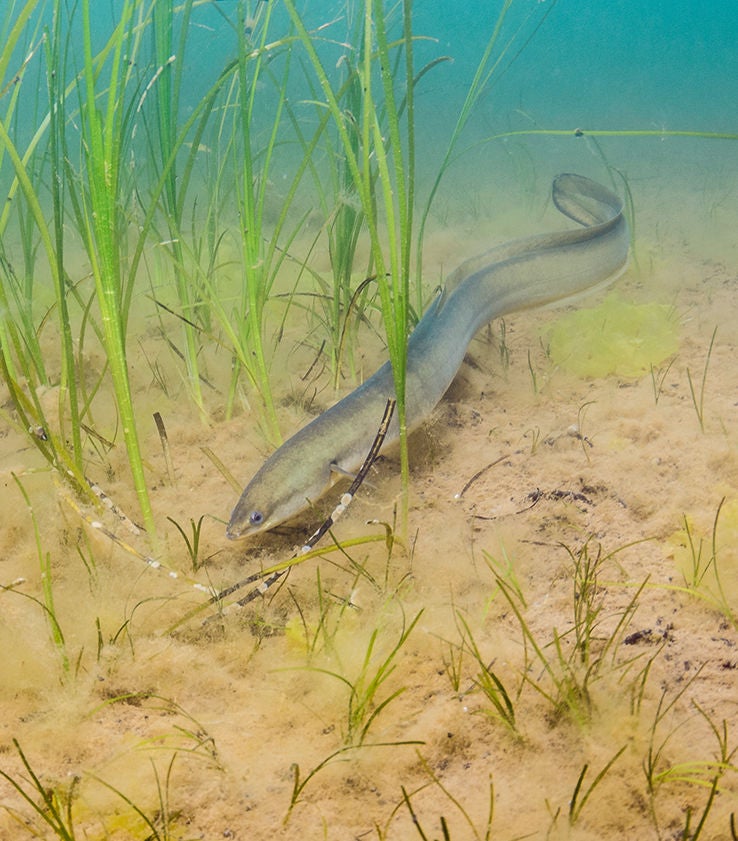
Interesting Facts

“Slippery as an eel” is an accurate saying because, like all other fish, eels’ bodies have an outer mucus layer that protects them from disease, but American Eel produce much more of this mucus which also makes them incredibly difficult to handle!

American Eel can grow more than a metre long and have been documented to live up to 40 years.

For the first time ever, scientists recently tracked an adult eel on its oceanic spawning migration. The American Eel swam 49 kilometres per day and reached depths of more than 699 meters!
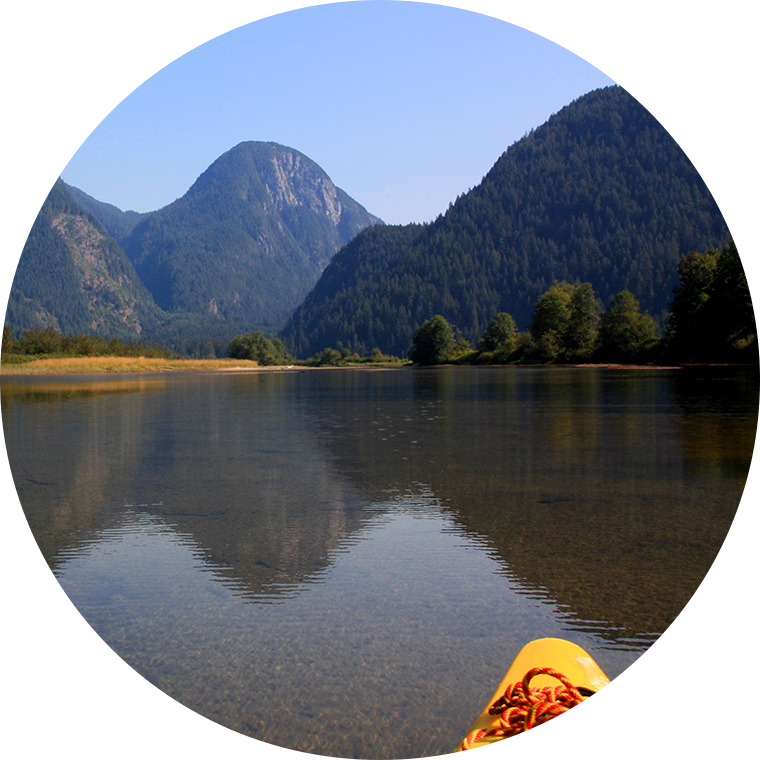
Program Overview
The Canadian Wildlife Federation is using research and advocacy to learn more about American Eel behaviour, to develop mitigation options for the species, and to increase support for protecting and recovering the species.
In the News
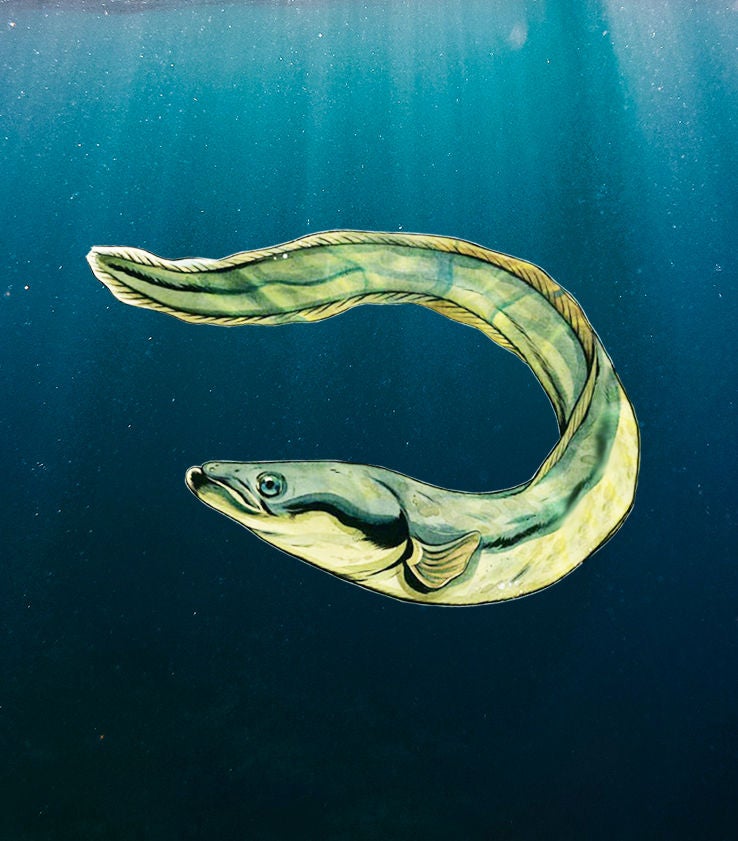
Key Achievements
- 2007 –CWF partnered with Ministry of Natural Resources and Forestry, Algonquins of Ontario, Arnprior Fish & Game Club to develop methods for capturing American Eels, and study the movement patterns and habitat preferences of American Eels using radio telemetry.
- 2012 – CWF began raising public awareness by posting signs at boat launches and distributing pamphlets.
- 2014 – CWF participated in the translocation of juvenile American Eel from the Beauharnois ladder to the Ottawa River, and began an acoustic telemetry study to track their post-release movements.
- 2017 – CWF partnered with Carleton University and Energy Ottawa to determine downstream migration behaviour, passage selection, and success of American Eels past Chaudière Falls Generating Station.
- 2018 – CWF and Carleton University collaborated to assess whether recreational fishing poses a threat to American Eels.
- 2018 – CWF and partners wrote to the Minister of Fisheries and Oceans, requesting that American Eel be listed under the Species at Risk Act.
- 2020 – CWF and partners worked to develop standard operating procedures for implanting Passive Integrated Transponders (PIT tags) in American Eel.
Does recreational fishing pose a threat to American Eels?
Exploring angler and American Eel interactions on the Ottawa River.
About: The Canadian Wildlife Federation partnered with Carleton University to investigate interactions between Ontario anglers and American eels.
Goal: We wanted to know if anglers ever catch American Eels while fishing, and if they do, what they do with the American Eels. We also wanted to know the effects of catch and release on American Eels that are incidentally captured by anglers.
History: In summer 2018, we conducted interviews with Ottawa River anglers to learn about their fishing practices, their experiences capturing American Eels, their knowledge of American Eels, and their environmental values. In June 2018, we conducted an experiment to determine mortality and injury rates of American Eels following catch-and-release. We found that American Eels are resilient to recreational fishing, as long as they are released (by either removing the hook or cutting the line), and that almost all anglers release eels unharmed.
Future: With funding from Cabela’s Outdoor Fund, we are now sharing the results of our work in 2018 with anglers and the general public. We have developed best practices for what to do if you accidentally catch an American Eel while fishing.
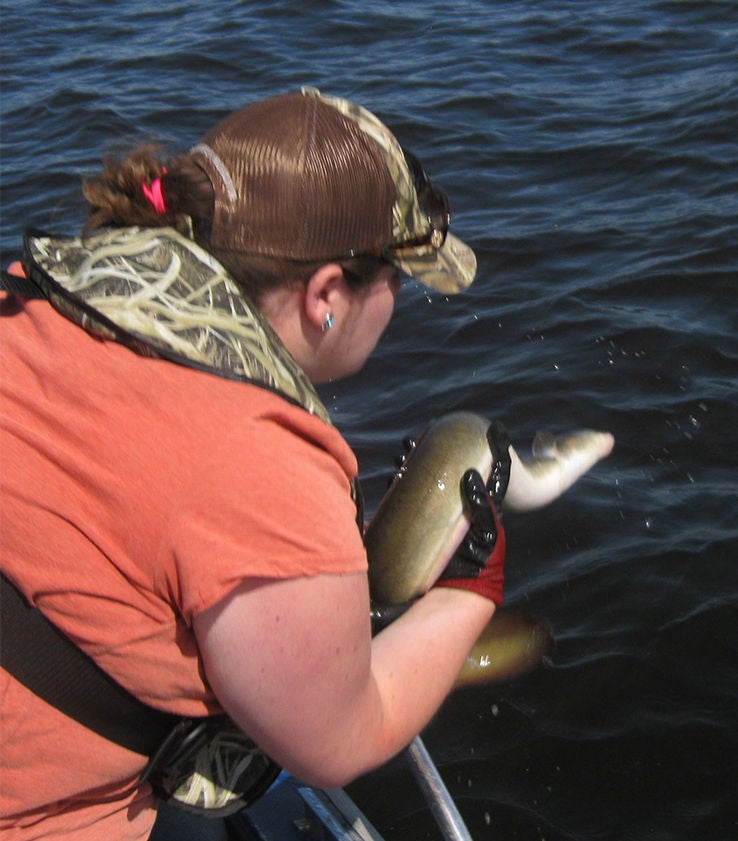
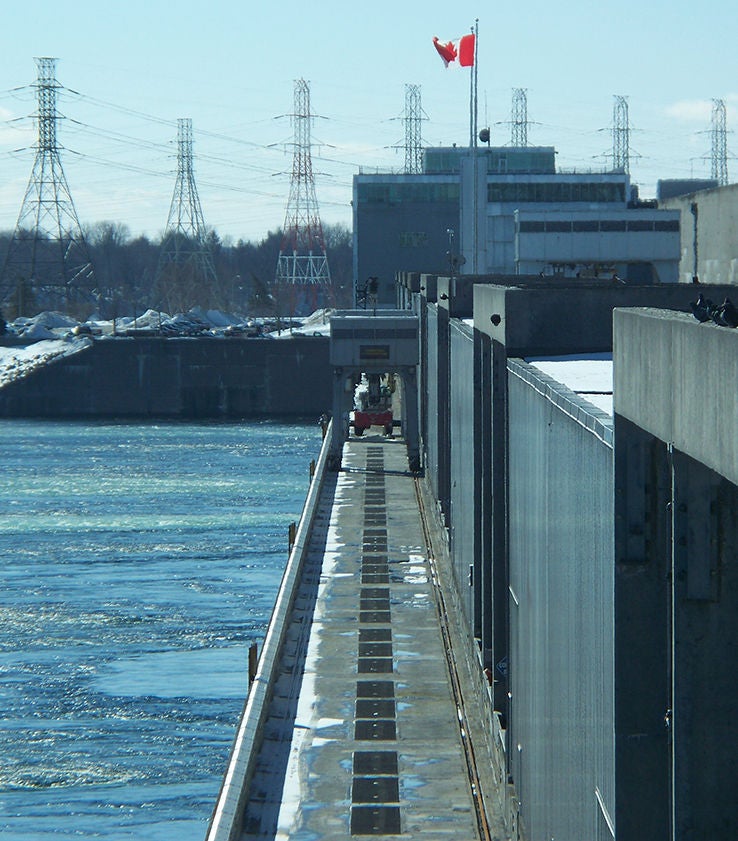
Assessing downstream passage of American Eel at a multi-channel hydropower facility
About: The Canadian Wildlife Federation, Carleton University and Energy Ottawa are collaborating to study downstream migration and passage success of American Eels at Chaudière Falls Generating Station.
Goal: We want to know how American Eels behave when approaching Chaudière Falls, the passages they use to pass the dam, and their survival.
History: In 2017, Energy Ottawa began operating a newly constructed powerhouse that was specifically designed for safe downstream passage of American Eels. In 2017, we began using acoustic telemetry to track eels as they migrate past the Chaudière Falls.
Future: Field research was completed in 2019, but was hampered by two >1:100 year floods, and the low abundance of eels. Results will be summarized in a peer-reviewed paper.
Achievements: By the numbers:
- 5193 fish from 26 species captured in 272 trap nets
- 67 hours of night-time electrofishing
- 60 American Eels captured
- 24 American Eels (of correct size range) tagged
- 5 American Eels have been tracked on their migration past Chaudière Falls
Take a Stand for
the American Eel
We need to call on hydropower companies to require safe passage for American Eels at hydroelectric dams and other barriers that block their migration.
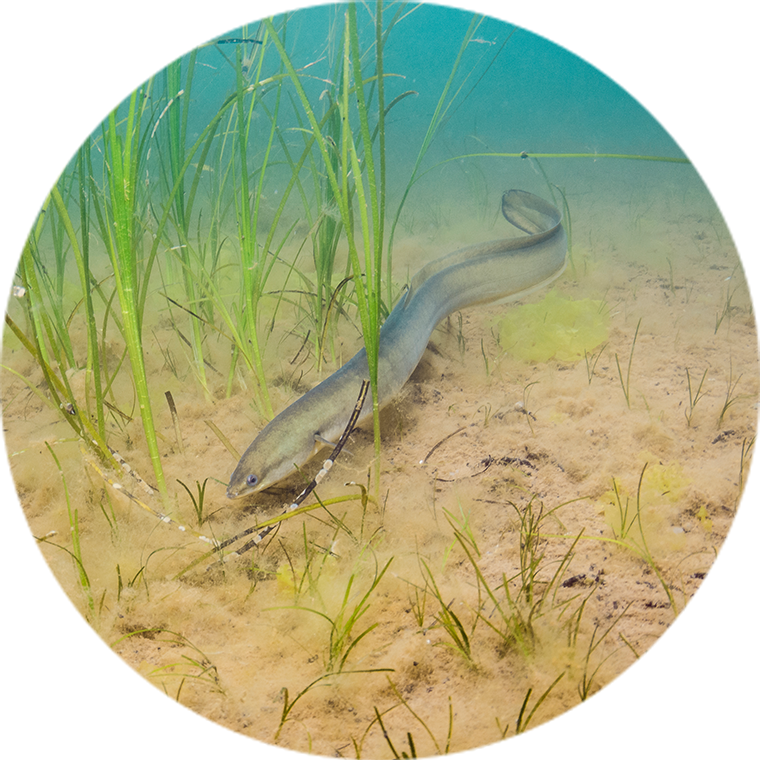
Next Steps
Guides & Handouts
Published Papers & Letters
- A contemporary estimate for the abundance of juvenile American Eel Anguilla rostrata attempting to migrate past a barrier in the Ottawa River (July 17, 2022)
- Revisiting the challenge: perspectives on Canada’s freshwater fisheries policies three decades after the Pearse Report
(June 23, 2022)
- Assessing a proponent-driven process for endangered species threat mitigation: Ontario’s Endangered Species Act, American Eel, and hydropower
(February 10, 2022)
- Bright spots for inland fish and fisheries to guide future hydropower development
(January 24, 2022)
- The alarming state of freshwater biodiversity in Canada
(June 28, 2021)
- Regaining Lost Protections: Status of the Revisions to the Canadian Fisheries Act
(January 1, 2021)
- Fate of translocated American eel (Anguilla rostrata) in the lower Ottawa River and passage behavior at a multichannel barrier
(January 1, 2021)
- Angler interactions with American eel (Anguilla rostrata): Exploring perspectives and behaviors toward an imperiled fish
(November 5, 2020)
- Angler interactions with American eel (Anguilla rostrata): Exploring perspectives and behaviors toward an imperiled fish
(March 1, 2020)
- Establishing best practices for implanting Passive Integrated Transponder (PIT) tags in American Eel (Anguilla rostrata)
(January 16, 2020)
- Horizon scan of conservation issues for inland waters in Canada
(March 22, 2019)
- American Eel Listing Decision Letter, March 18, 2019
(March 18, 2019)
- Joint Letter for the American Eel Timeline, February 26, 2017
(February 24, 2017)
- Joint Letter for the American Eel, August 22, 2016
(August 22, 2016)
- Algonquins of Ontario: Returning the Kichisippi Pimisi - The American Eel - to the Ottawa River Basin
(May 1, 2014)
Additional Resources
Program Lead
Nick Lapointe
Nick Lapointe works at the Canadian Wildlife Federation as the Senior Conservation Biologist – Freshwater Ecology. Originally from Ottawa, he completed his doctorate at Virginia Tech before returning home to work in conservation. Nick studies aquatic habitat, restoration and invasive species while working to protect freshwater fisheries, biodiversity and species at risk. He spends his free time fishing, hunting, and foraging in Ottawa’s hinterland.
“Whether you love eels or think they’re kind of ugly, they were once a common part of our freshwater ecosystems and a valuable resource. American Eel deserve to be conserved and protected like any other species, but federal and provincial governments and hydropower companies are badly failing to do so”

- 0
- 1
